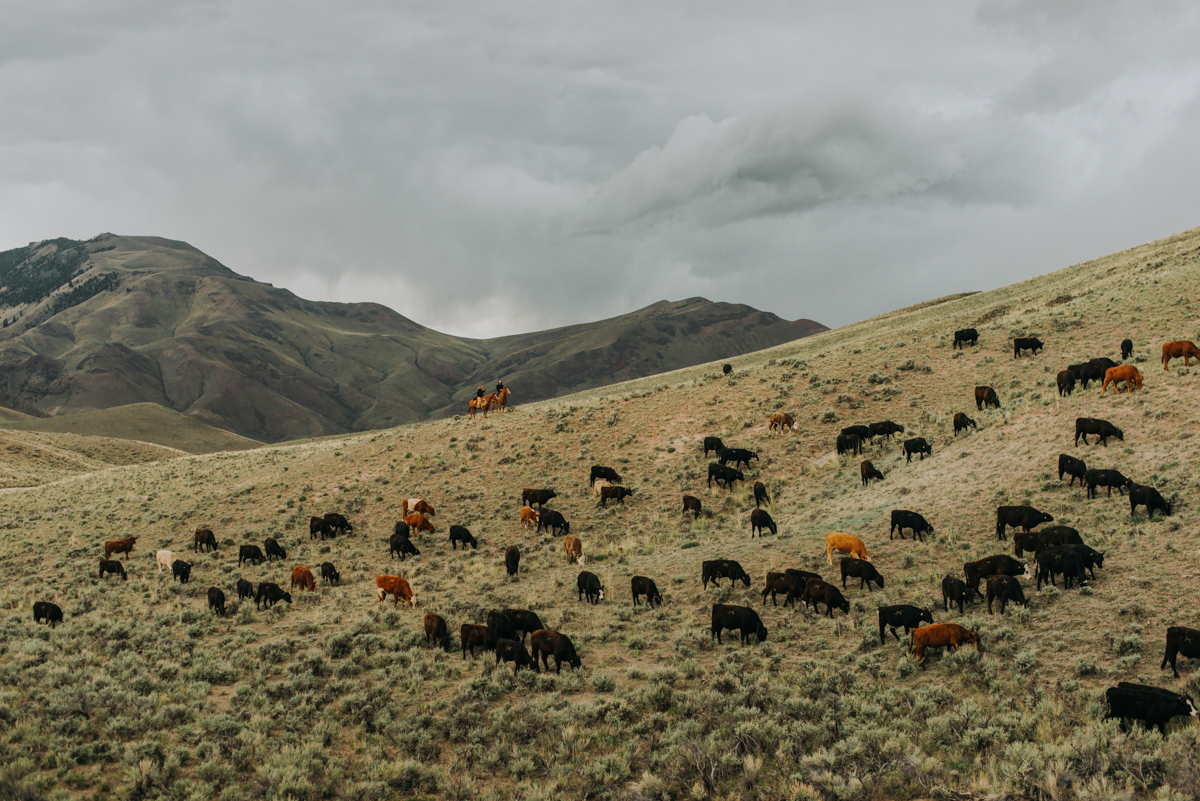
The winds of change are blowing over Alderspring. Snow is finally starting to recede again after last week’s storm left the hills white. Winter is tenacious in our high mountain valley, but spring breezes blow in heat that fans the flame of green across the landscape. The meadows are littered with color as the spring wildflower exuberance settles on both our valley ranch and the wild ranges above, as if driving winter away with riotous color. As I wander through the Salmon River Breaks, I am in awe of the floral displays on the mountain rangelands. I like to think it’s so exceptional because of the mineral density of our volcanic soils that typify our country.
And volcanic it was. We are in the middle the Challis Volcanic region, a geologic region covering an area the size of Connecticut that is characterized by deep volcanic ash deposits that filled canyons with up to 1000 feet of ash. The material all came from one very productive and violently erupting source: the Twin Peaks Caldera, marked by an imploded crater 25 miles southwest of Alderspring and flanked by two 10,000 foot snowcapped peaks of the same name. The result of the eruptions was total devastation. Any life that may have existed here was completely wiped out. A Mother’s Day hike just this last weekend in the foothills above the ranch yielded some telltale Pompeii-like casualties. We found the remains of several petrified redwood tree trunks buried deep in the abundant ash. Lava flows and ash blanketed the landscape, and effectively laid down a new topography that now defines the region. To this day, you can still easily read the signatures of catastrophe in the landscape and discover huge landslides and rock falls that resulted from the thick and sudden deposition of the hot and gritty ash.
As it cooled, much of the superheated ash welded into what is called tuff, an easily broken soft rock material that the Salmon River and the canyons that drain into it carved into cliffs and breaks. Most of Alderspring’s summer range grasses grow on debris left by the Challis supervolcano. We ride horseback with the herd, picking our way through the rock formations of tuff, with ash underfoot, covered with the bunchgrasses that made their homes there. Often, the rocks become the semblance of companions after many days (too many?) days on the range. We have names for a few of them.
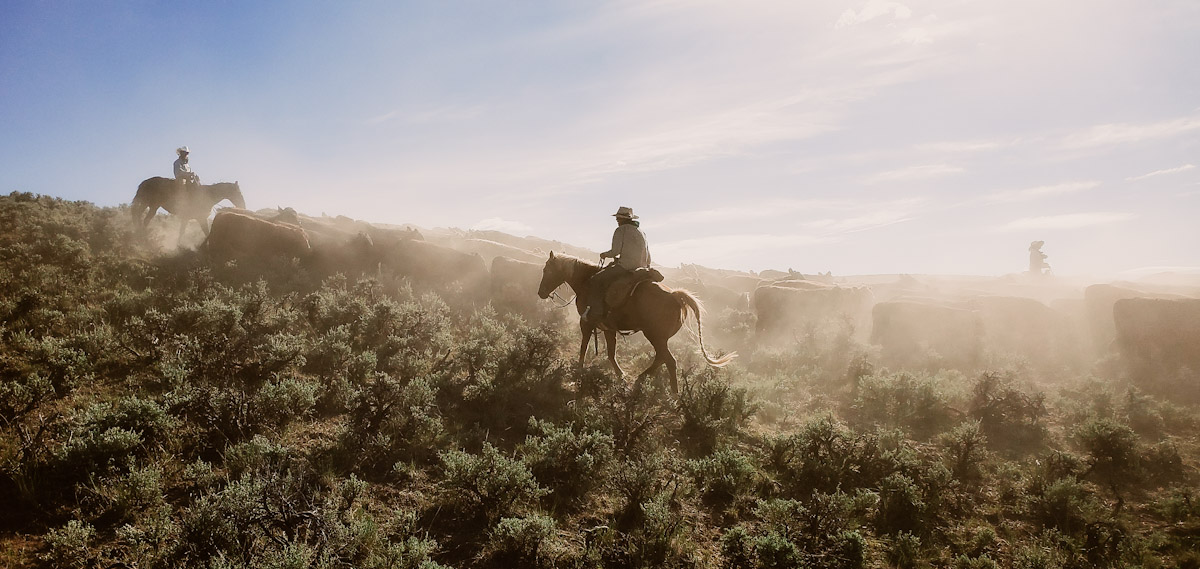
But it was Ed Corbett who named them all. I had the privilege of riding with 80 plus year old Ed on his ranges more than 25 years ago. I once calculated that he likely rode nearly 150,000 miles horseback, and his weather-tanned hide stretched over a sinew and bone frame showed it. He and his son-in-law, Rex Tolman, ran about 350 cow calf pairs in the Salmon River ranges on the north side of Hat Creek. Little did I know then that we would have the 70 square miles to the south of theirs 20 years later.
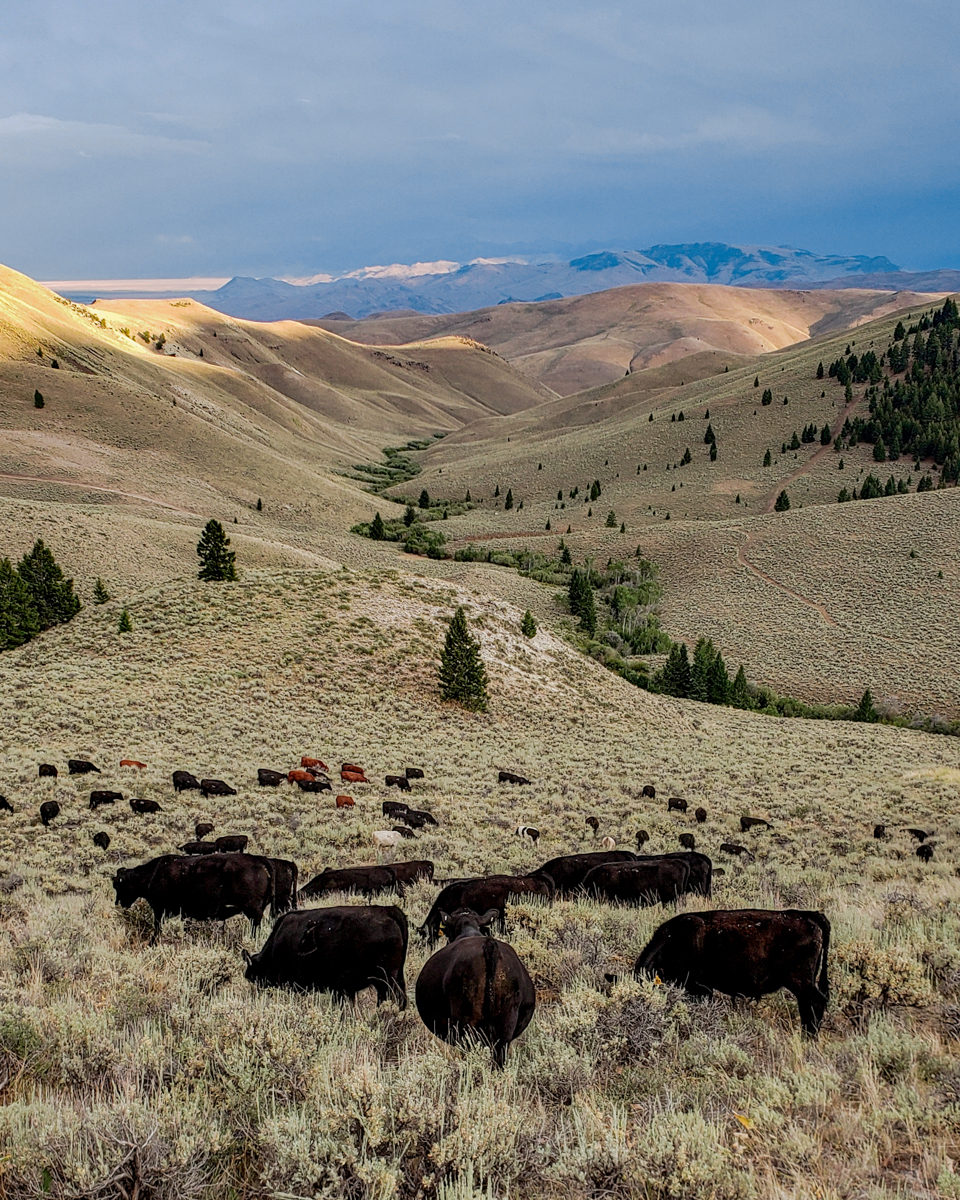
Maybe it was destiny, because riding with Ed and Rex ingrained in me a love for the Hat Creek landscape. It was far from an easy range because of its extreme topography and rocky volcanic origin. My guess is that if you could flatten our 70 square miles out, our summer pasture would cover more than twice that area. And as far as difficulty, well, Duane Moen, the previous owner of Alderspring’s Pahsimeroi ranch summed it up one day as I visited him here in the big valley back in 2004.
Duane had been on the ranch since 1970, and made a life here for his family. It was a brutal life on him, and he looked it. His 78 year old range-hardened eyes glared at me as he worked under the hood of a derelict dodge pickup that was by make and model a few years old, but was absolutely hammered. I told him I was looking at purchasing the ranch—a necessary upgrade for us from the next valley, where we had been for a little over 10 years. He held silent, glaring at me at intervals while I talked. At first, I was speaking confidently, but slowly became more rattled by his acidic stare as I continued. By the end of my soliloquy, I felt like I had been reduced to a 13 year old school boy, sharing my ranch dreams in my best pre-puberty high pitched voice.
He put the wrench down and limped over to me. His still foreboding and muscular frame was a little hunched from the years of hard work. His crinkled and scowling face continued to glare as he stopped just 2 feet from my own. He looked me up and down, sizing me up. Duane’s voice didn’t disappoint; it was pure gravel, just like the range he had been on.
“I’m not sure you’re tough enough. That Hat Crick country is hard on pickups, hard on tires and hard on horses. I go through 3 sets of iron (horseshoes) a year. Two sets of tires. Cows get lost up there. The wolves are eating us alive. Poison (larkspur—a wildflower) is in every draw, killing more. That range has rocks that are sharp and tougher than pigiron. Are you?”
“Am I what?”
His stare was unbroken. His mouth moved with a plug of tobacco in it. Or something else. Probably some random piece of horseshoe iron he’d bit off: Duane-candy. Or maybe it was nails. I opted for the latter. The man must eat nails with his eggs and bacon for breakfast. “Are ya?”
He stared for what must have been a minute, then further clarified: “Tough enough?” I thought maybe he was going to spit one at me. A nail that is.
He looked at me with those steel cased Duane Moen eyes, and turned away, limping back to the pickup. “I think I am,” I said quietly. “I used to ride with Corbett.”
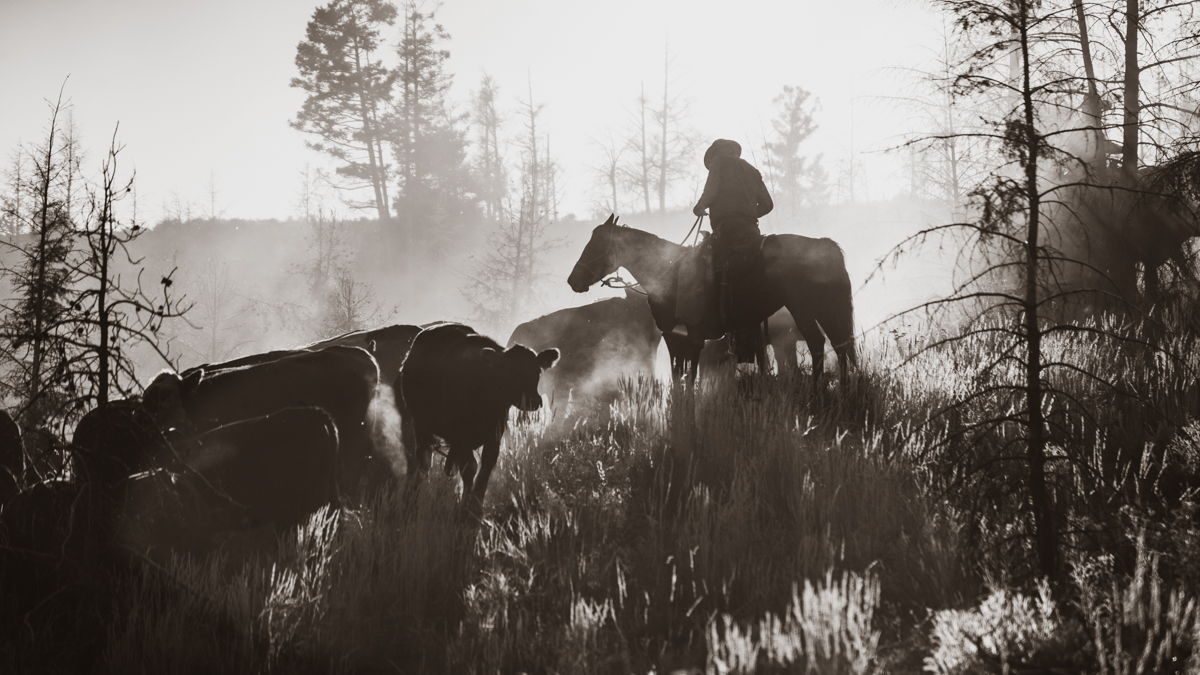
I didn’t think he heard me as he went back to the wrench and pickup, but I was mistaken. “Damned sheepherder. At least he knows Hat Crick. And he can ride. But he treats his cattle like sheep, riding with them all the time.”
Ed did. He rode every day, and his range grasses showed it. I had never been on a range in such good shape. It was the mark of a steward; a husbandman of both range and the cattle on it. I would sight him on a mountainside often while I worked felling timber 20 trail miles to the north. I’d put down my chainsaw to stop for lunch. A movement on a distant hill, miles away would catch my eye. There, in the volcanic hoodoo rocks that typified many of the ridges in the Hat Creek country, there would appear a speck of a black Angus cow. Then another would appear, and another, each with a calf trailing behind, lined out in single file on some precipice ledge. After counting 20 or so in the line, I invariably saw Ed, bringing up the rear, horseback on Frog, his gelding, with two border collies in tow.
He was moving them to a piece of grass he spotted on another foray. And that’s how he ranged his cows the entire summer. They never were left to their own devices. Instead, they were all carefully placed across the rugged landscape that they called their summer home. Ed knew how to make them thrive, in spite of the broken country, because he later told me that it was some of the most efficient, nutritionally dense, cattle-growing grass on earth. I knew after a few of these long distance encounters that I had to spend time with him, if he would have me, on those Hat Creek ridges. It turned out that all I had to do was ask.
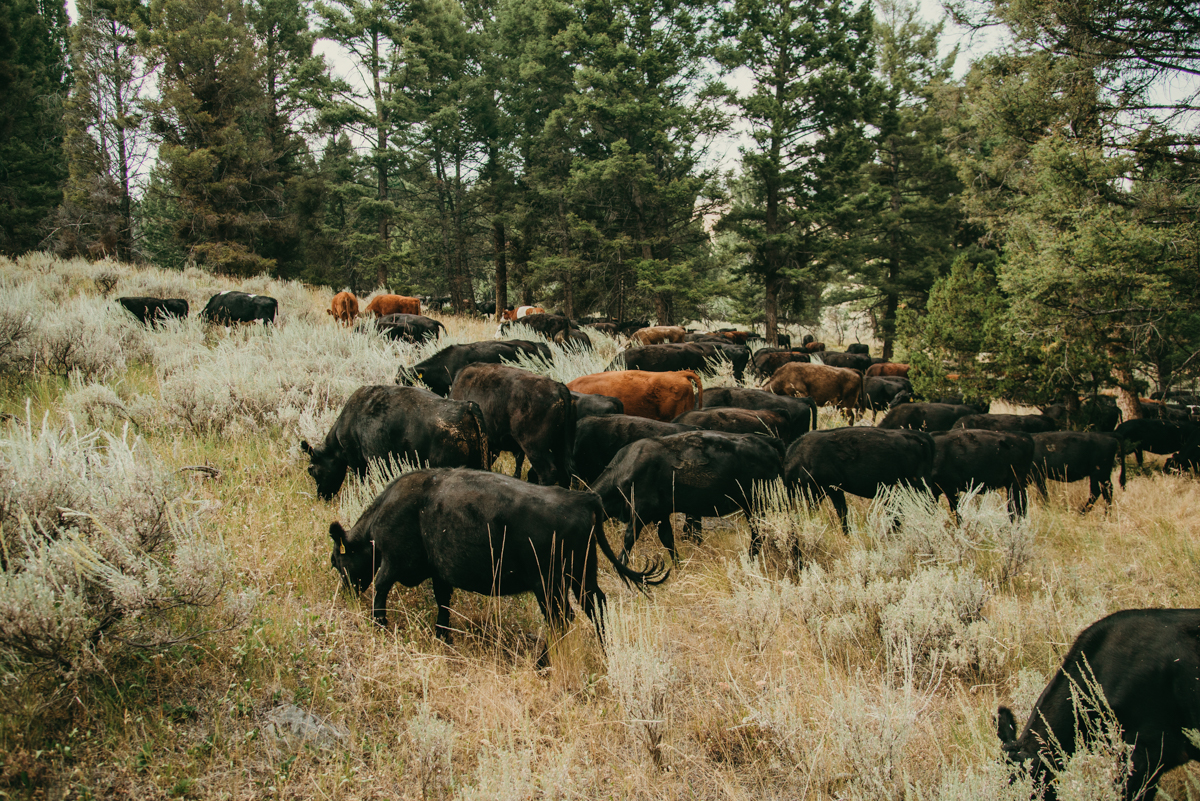
As I rode with Ed and Rex, it became windowpane clear that they knew their 90 square miles better than the back of their wrinkled hands. Their cattle and horses knew it too. On my first ride with him, Ed threw me on a young mare named Judy, who was just a little spunky, and quite well knew her business. Soon after we moved out, a pair strayed from the bunch and headed up into the chimney rocks to get away from the group. Bunch quitters, they’re called in cowboy-eze. Ed gave me the nod, and I leaned into Judy. She shot off, almost leaving me floating in air in the dust behind her galloping-over-goat-rocks feet. Somehow I managed to stay on, and by the time I collected my airborne butt on the saddle, we were around the wayward cow and were bringing her and baby back to the bunch. Quitter no more under Judy’s watch.
Old Ed spoke with a gravelly yet singsong voice that would meander over his shoulders and drift back toward whoever rode behind him. And it wasn’t long before I realized that the map of his mind was built on his own custom made nomenclature of the country. I first experienced it when were heading down into a dark canyon of volcanic tuff with 200 foot walls and huge, shadowy fir trees that lined the bottom.
Even in the heat of summer, it was cool in the perpetual shade”¦almost chilling. He sat back in his saddle, his hand barely touching the single lead rope and halter that Frog had on his head. The gelding responded with an instantaneous halt. Slowly, the long willow switch that Ed always carried in his free hand rose and pointed to the canyon’s gut. Then, the gravel started: “You are about to enter the devil’s gates. It was forty years ago that I met the devil himself here, demanding my soul for safe passage for me and my cattle.”
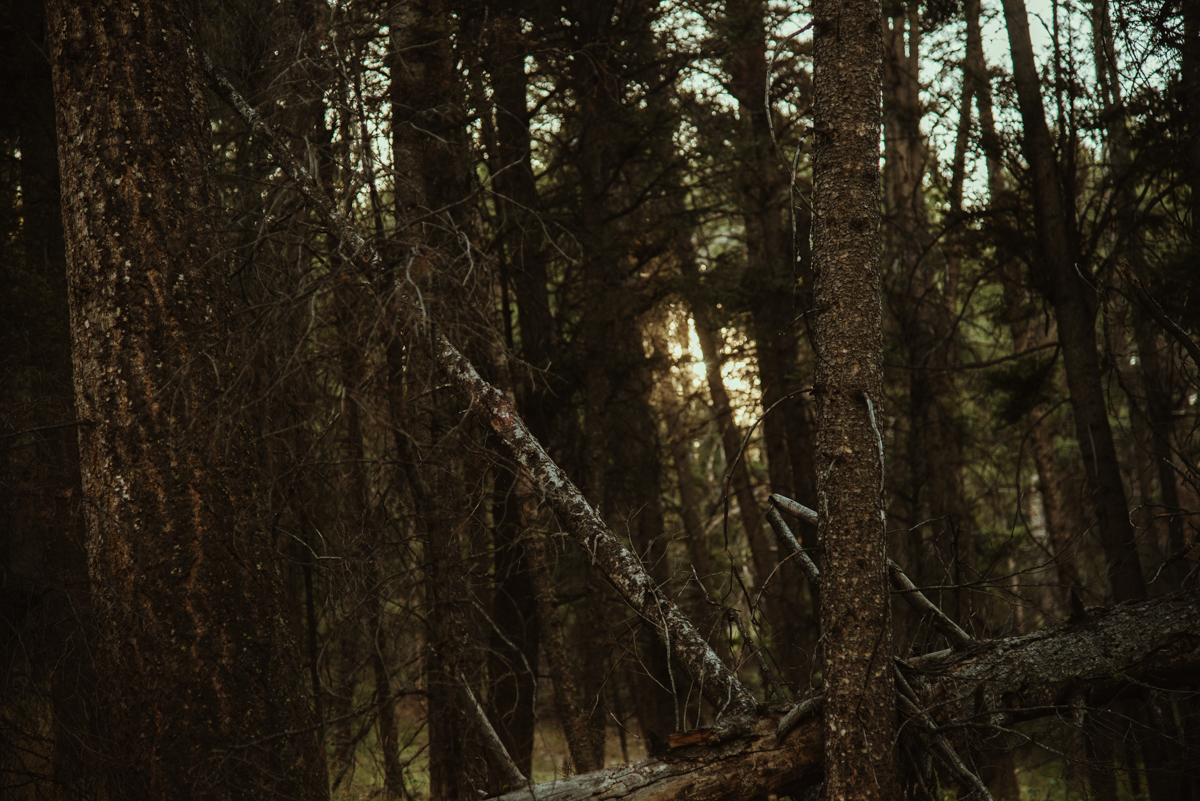
The chill was now even more palpable in the dark grotto. Sure enough, the canyon narrowed to only 10 feet wide. The cattle passed through, but could only move forward two abreast. I could see that there was no other way, and if the devil was granting access, well, one could be in trouble. As we waited for them to move on, he turned around in his saddle and connected with my eyes in a grave seriousness—albeit with an unmistakable twinkle.
I broke the silence with a nervous question. “What happened? Did you have to trade your soul?”
“No. Hehe.” I could see him smiling at the memory. “The Dutchman did some dealings for me. I’m not sure what he did, but that devil was appeased. And somehow, the Dutchman ended up with castles in the sky because of it.” He turned toward me with a glint in his eye. “You’ll see.”
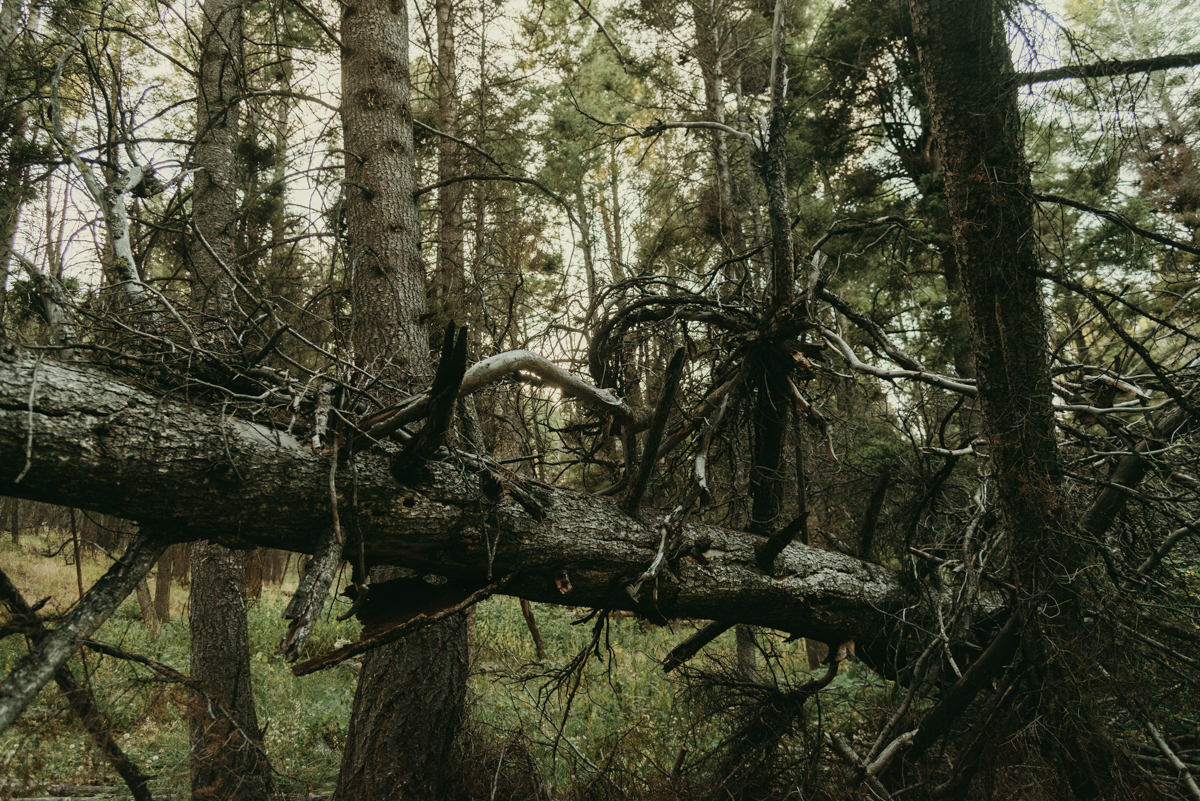
And so I would. As we moved the herd quietly up the gulch, he pointed upward to the right, and high on the canyon walls stood a testament to the fact that on that day, the Devil’s kind were absolutely frozen in time. The willow switch pointed upward as we passed by. “See all those spooks and goblins? Every last one of them turned to white stone when the Devil’s deal went bad.” Indeed, ghoulish one-eyed and crooked faces and ghastly shapes lined the horizon carved by wind and weather into the volcanic tuff. In about another mile, the trail left the bottom, and we started up a tiny precipitous trail to the left. The cows knew where to go—up the trail. Frog came to a halt again, partway up the switchbacked way.
My Judy didn’t like stopping. She pawed at the dirt to the side of the trail. It was steep enough that I could touch the hillside with my hand while on her back. If she wiggled too much and lost her footing we were surely going to die in an unstoppable rolling and clattering fall to the canyon below. Maybe this was the way the devil would really get appeased. Sacrifice any greenhorns to the canyon death below—forever. I strained my eyes for telltale bleached bones littering the bottom.
“There’s the Dutchman’s Castles.” Ed pointed his willow switch high to the skyline above. There, the eroded welded tuff had formed battlements and turrets of an elaborate castle complex. It was crumbling, and it was clear that the Dutchman was no longer in residence. “He’s gone forever. But so is that devil. We’ll never know what kind of deal was done.” Ed turned back to me and jumping Judy. He obviously found humor in my concerned cliffside face, and paused a little longer so he could enjoy it. He cracked a wrinkled grin. “But we’ll always have his castle as a monument of what happened here that day, when the devil got his due.”
Ed had practiced these stories on his grandchildren. Every summer, Ed’s married children would send their kids to live with grandma and grandpa in the remote Hat Creek summer house, and the kids would spend their days riding with Ed. He had honed his stories well, for the dusty and often lonely trails of the high ranges give plenty of time to meander in mind.
But Ed’s stories weren’t limited to wild tales. He also liked to tell stories of the landscape, stories about sagebrush and grass and grouse and elk and things he had seen while riding for over 3 decades on this piece of ground. One time Caryl and I were both riding with him and toward the end of the day we rode through a canyon about 200′ wide with a small perennial stream. The old floodplain was covered with horse-high basin wildrye. It is a beautiful native grass that stands about 6 foot tall, but it can be easily damaged by grazing too hard or at the wrong time. It once covered floodplains of streams and rivers in the west, but now is found in small remnants.
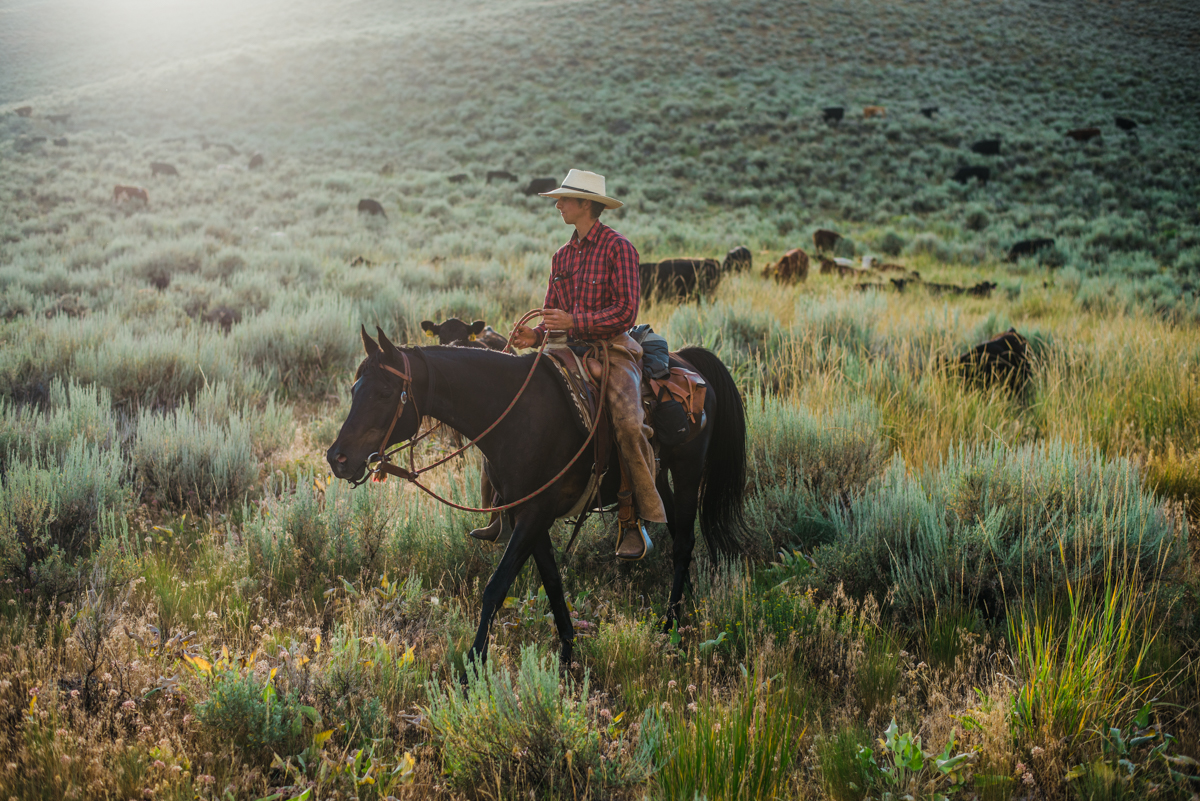
Ed called it Basin Wildlife. A wildlife biologist had told him it was good for wildlife several years before, so Ed thought he would make more of it. At that time I didn’t realize I was seeing a rare sight. I have not seen such a large or vigorous patch of wildrye in our country ever again. And I have no idea what he did to make this waving in the breeze stand. Ed can’t tell me because Ed died a few years later taking everything he knew about Hat Creek to his grave. I still miss him.
And Duane”¦he became sort of a friend, and would come by and chat. I think I finally earned his grudging approval, or maybe he just found us interesting. But he was right. The ranges are tough, and not for everyone. But the beauty and story carries us along, while riding in the knowledge and the vision that there is a perfect rightness to what we do.
And that rightness is found in connecting the uncompromised richness found in our volcanic soils and the plants that live on them with the superior wellness of beeves and the humans that partake in them. And that makes it all worth it, thanks to pioneers like Ed (and his benefactor, the Dutchman) for showing us the way. Ed planted long dormant seeds in the minds of Caryl and I about a different way to see the range.
Those seeds Ed planted years ago in our mind have sprouted, and are now bearing fruit. He saw the range as would an artisan; he was a handcrafter of beef while being a steward of the range. On the outside looking in, what he did seemed like “sheepherding” as Duane Moen once said. He didn’t sleep with his cattle as we do now—it was the next logical step for us—but his placement of cattle was intentional, and it matched the bovine with exactly the part of the landscape it could live harmoniously in at that time.
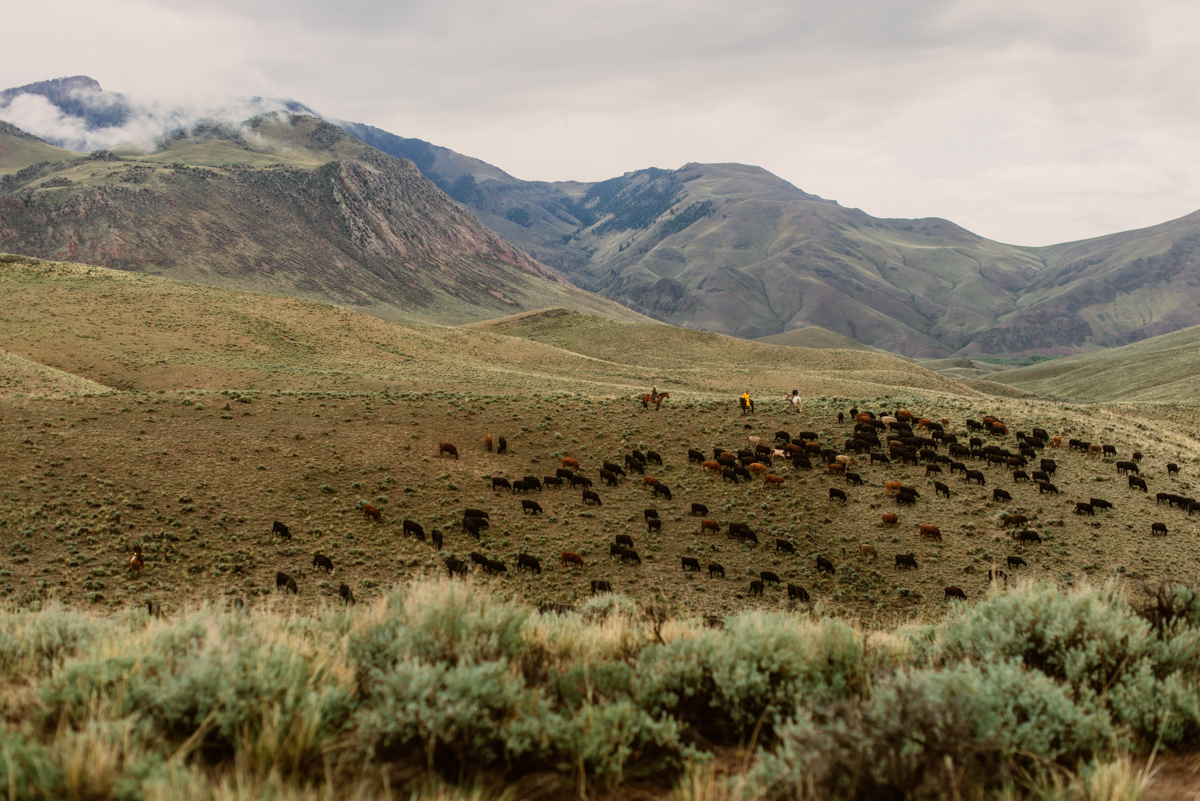
So it turns out that it isn’t toughness that keeps us riding that range (although it helps), but our vision we have captured of what we can bring to the table. It is a table that is set with the best of the land for our beeves”¦and our partners”¦infused with a wild wellness element that is rare fare in our mass produced food from modern agriculture. We find more and more that the old timers had it right.
Happy Trails. Thanks for riding with me.
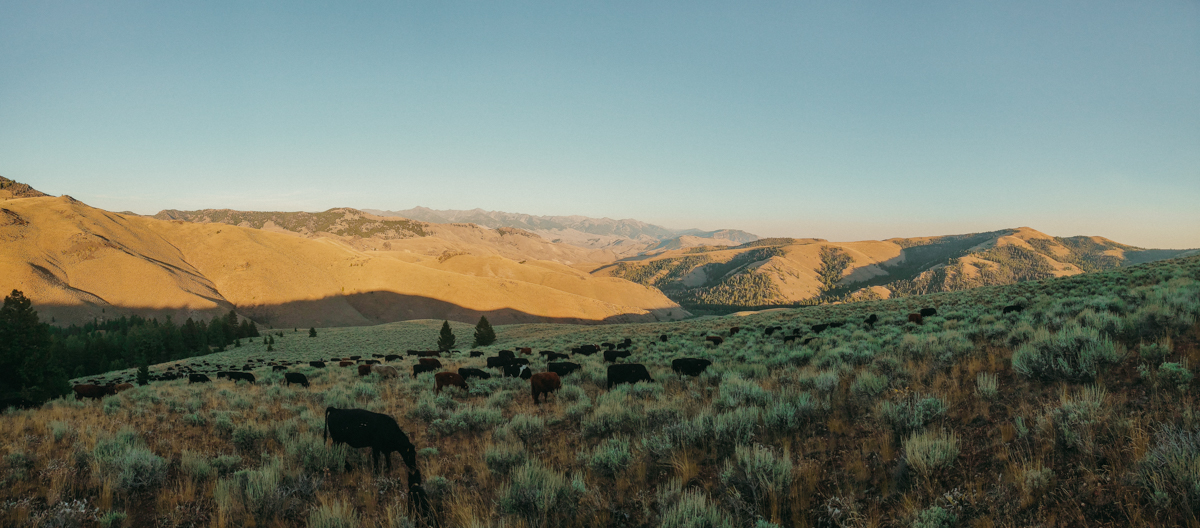

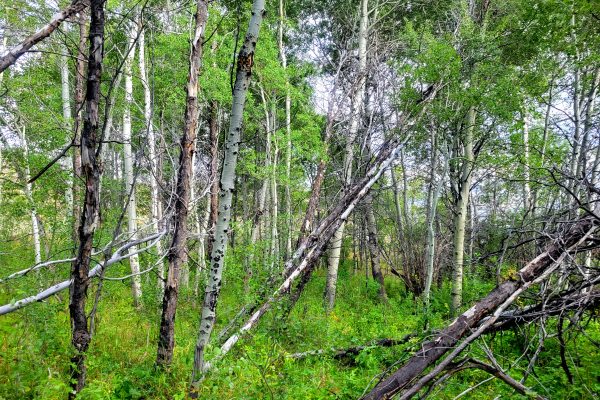
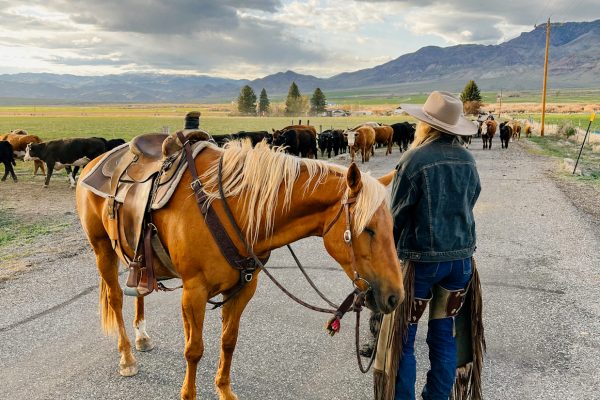
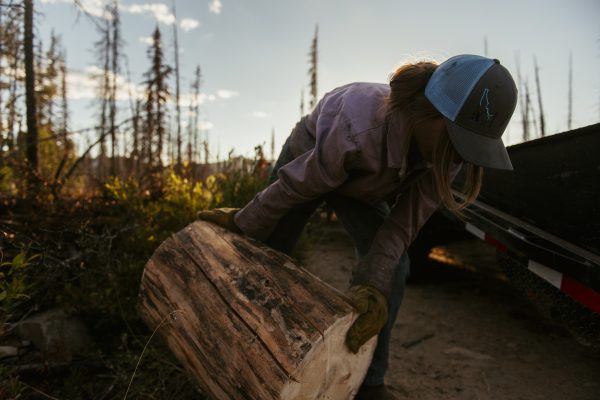


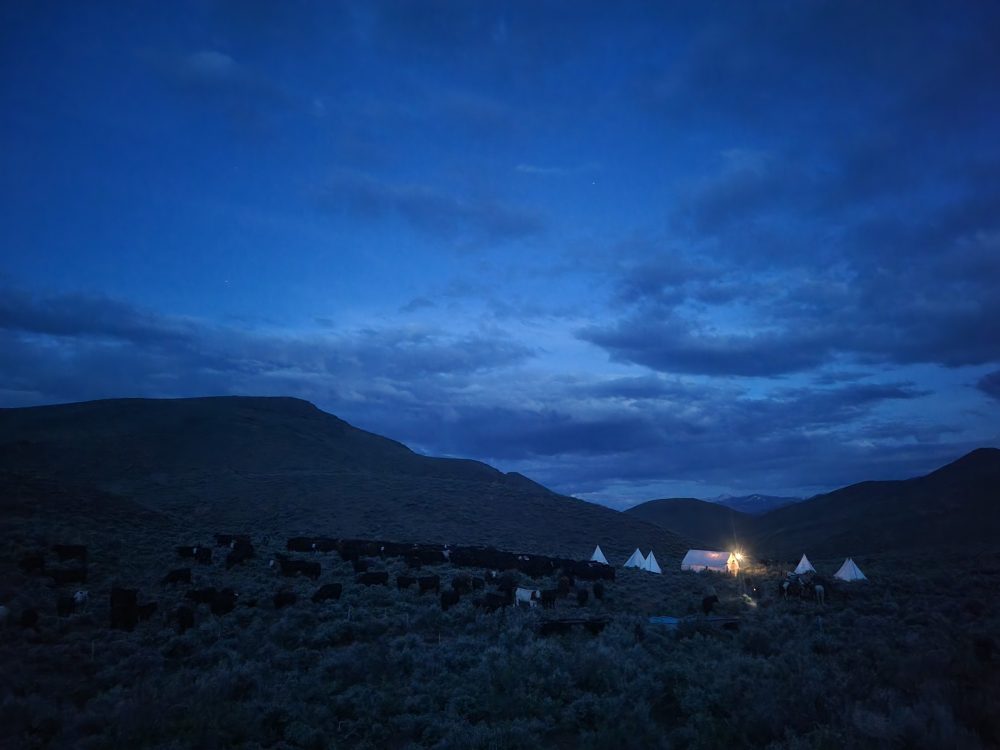
Leo G Younger
Satisfaction….
Mary Ann Newcomer
Well, first of all, I always love the pictures. Breathtaking. Ida-home. And then the stories. I love the stories. I love you all and we’ve never met. We have talked on the phone, but someday…if you ever get to Boise, let me buy you lunch.
Deb Olsen
I believe you’ve carried in Ed’s legacy, he would be proud and I’m sure he smiles upon you as you carry on his legacy and add to it of course. Seems you also picked up where he left off on the story writing and what a beautiful thing. You showed Duane that you indeed were “tough enough “, and had what it takes. As always I truly appreciate all that you do and every time I sit at my table to share a meal I think of all of you and the blood, sweat and tears that brought the meal to my home. I don’t personally know any of you but I feel we are all connected in this fabric of life and I feel blessed to have found you.
Terry
It’s truly a fine family to be a part of.
Terry in Smith River, CA
skyler Epperson
I enjoy your pen.